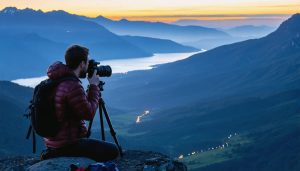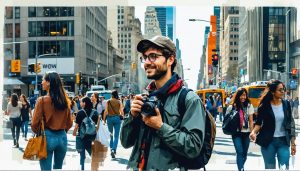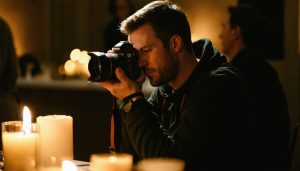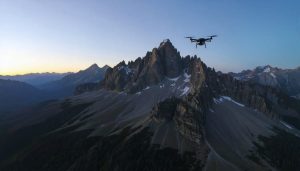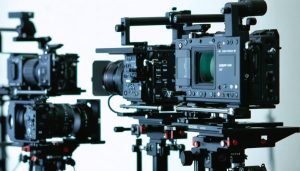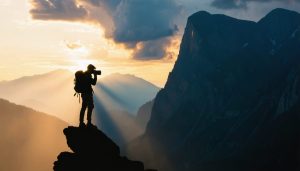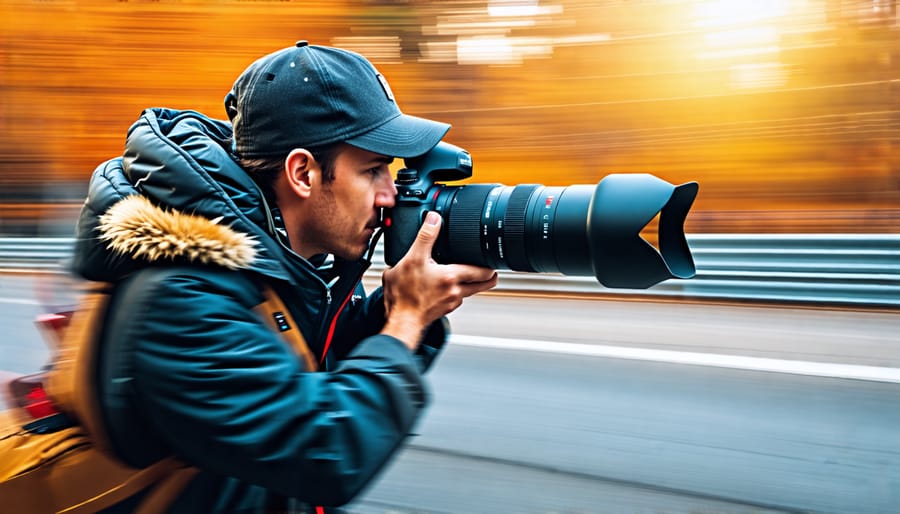
Master shutter speed to freeze motion effectively. Set your camera to a fast shutter speed, usually 1/1000th of a second or faster, to capture crisp images of fast-moving subjects like athletes or wildlife. Use continuous autofocus to track moving subjects with precision. Adjust camera settings to AI Servo (Canon) or AF-C (Nikon) modes for dynamic action shots, ensuring the focus remains sharp throughout the sequence. Experiment with panning to create dynamic, blurred backgrounds that emphasize speed and motion. Keep your subject in focus while moving your camera along with it, using a slower shutter speed around 1/60th of a second. Choose the right gear to enhance your action photography. A DSLR or mirrorless camera with a high frames-per-second rate allows you to capture more frames in rapid succession, increasing your chances of getting the perfect shot. Select lenses that offer fast autofocus and optical stabilization for smoother shooting experiences.
Additionally, consider incorporating sustainable practices into your photography projects to contribute positively to the environment. Engage in real-world practice by shooting local sports events or wildlife excursions to hone your skills. Implement these tips to propel your action photography to the next level, transforming fleeting moments into enduring images that tell compelling stories.
Understanding Your Camera Settings
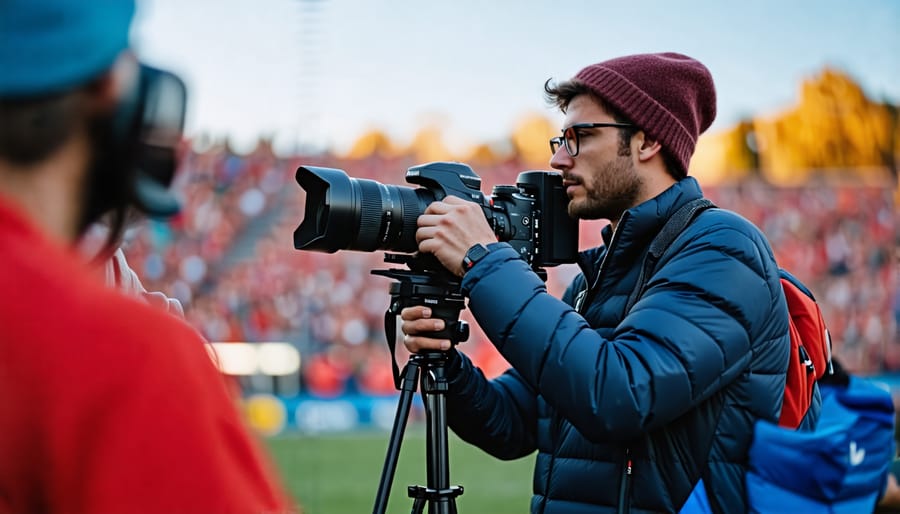
Shutter Speed: Freezing Motion or Creating Blur
Selecting the right shutter speed is crucial in action photography, allowing you to express different creative intentions. To freeze motion, you’ll want a fast shutter speed—typically 1/500th of a second or faster. This technique captures a split-second moment with precision, making it ideal for high-speed sports or wildlife shots. Experimenting with essential camera settings like shutter priority can simplify this process.
On the other hand, a slower shutter speed, such as 1/30th of a second or slower, can introduce motion blur, adding a sense of dynamics to your images. Panning—a technique where you move the camera in tandem with the subject—enhances the background blur while keeping the subject relatively sharp, perfect for capturing the speed and emotion of a race.
The key is balancing your artistic vision with technical execution, so always consider the available light and the speed of your subject. Remember, each approach offers a unique way to tell your story through photography.
Aperture and Depth of Field
Aperture, the lens opening that lets light into your camera, plays a pivotal role in action photography. By adjusting aperture settings, you can control the depth of field, which determines how much of the scene is in sharp focus. For sports or wildlife photography where the subject’s movement is a key element, a wider aperture (like f/2.8 or f/4) is often preferred. This creates a shallow depth of field, blurring the background and isolating the subject, making it pop against dynamic environments.
Imagine photographing a skateboarder in mid-air. A wide aperture not only keeps the athlete crisp but also softens any distracting elements behind them, drawing viewers’ attention to the action. On the other hand, if you want more of the scene in focus—a bustling street with cyclists, for instance—narrowing your aperture (like f/8 to f/11) can capture the collective energy without losing the main focus. Experiment with different settings to see how depth of field enhances your action shots, creating images filled with life and movement.
Choosing the Right Gear
Camera Body Options for Fast Action
Capturing high-speed subjects requires a camera body that can keep up. When shooting action photography, you’ll want to look for cameras with fast autofocus systems and high burst rates. Models like the Canon EOS R5, known for its advanced focus tracking, and the Sony A9 II, with its 20 fps continuous shooting speed, are prime choices. These features help ensure you capture every fleeting moment, from a bird taking flight to a racing car zooming by.
It’s also crucial to consider the camera’s buffer capacity, which allows for extended continuous shooting without delay. Real-world example: During a recent sports event, I found that my Nikon D6’s impressive buffer allowed for continuous shooting without a single missed frame. For enthusiasts and pros alike, investing in a capable camera body can make all the difference in nailing those perfect action shots.
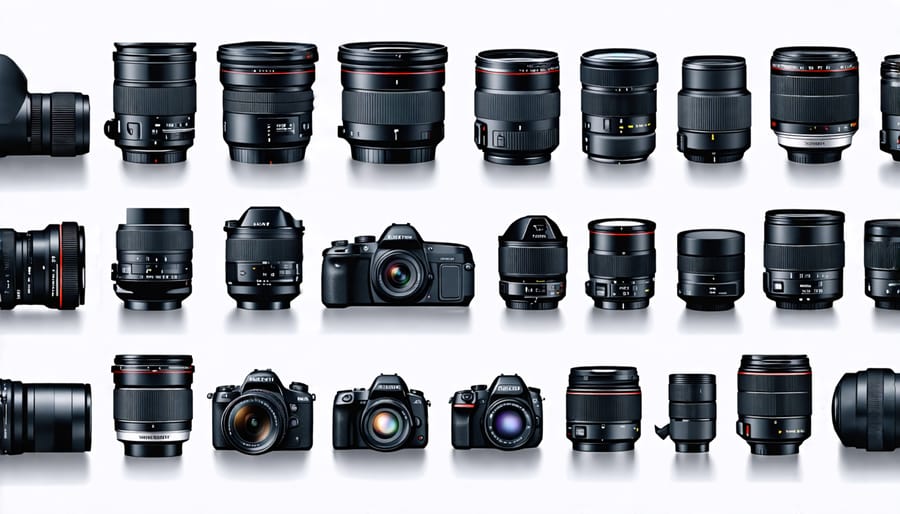
Lens Recommendations for Action Shots
When capturing fast-paced moments, choosing the right lens is crucial. For action shots, a versatile zoom lens can be your best ally. The 70-200mm f/2.8 lens is a favorite among professionals due to its ability to frame distant subjects while maintaining a shallow depth of field, perfect for isolating dynamic scenes. Prime lenses like the 85mm f/1.8 can also bring stunning results with their speed and clarity. Whether shooting sports or wildlife, consider investing in lenses with fast autofocus and image stabilization to reduce blur from movement. The glass choice ultimately hinges on the subject and style. Many action photographers swear by the best Canon lenses for their durability and performance under real-world conditions. Exploring these options will help you capture those decisive moments with precision.
Perfecting Composition in Action Photography
Rule of Thirds and Beyond
When capturing the energy and dynamism of action photography, applying the rule of thirds can significantly enhance the composition of your shots. This trusty guideline involves dividing your frame into a grid of nine equal parts and placing points of interest along these lines or their intersections, naturally guiding the viewer’s eye into the action and creating a balanced yet compelling image. However, don’t stop there—experiment by combining this rule with other compositional techniques for even more striking results. For instance, use leading lines within the environment to draw attention to the subject or create a sense of motion by playing with negative space to highlight the speed and movement inherent in action shots. These strategies help in crafting photos that not only tell a story but also captivate the audience’s imagination beyond the conventional frame.
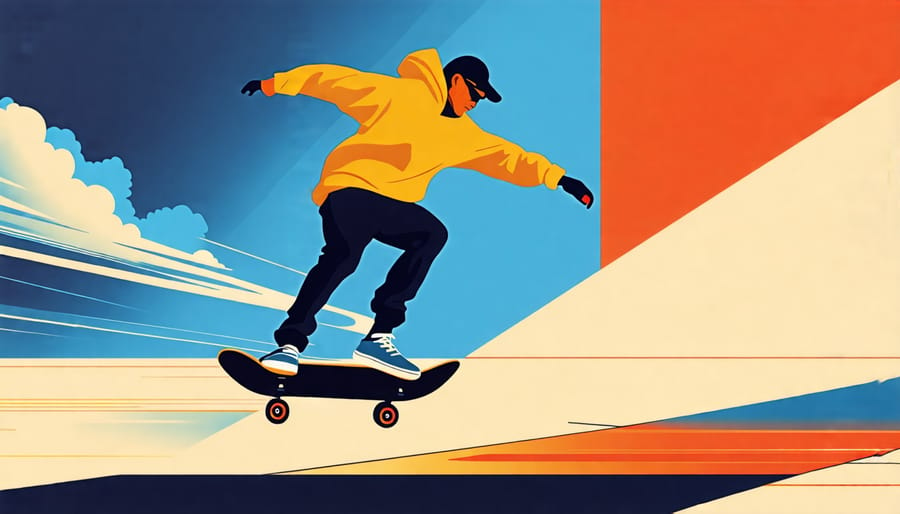
Making Use of Backgrounds and Foregrounds
In action photography, the background and foreground play crucial roles in enhancing your images by adding depth and context. When capturing dynamic scenes, consider using a blurred background to make your subject pop. This technique, known as “bokeh,” is achieved with a wide aperture and helps isolate the action, drawing the viewer’s eye directly to the focal point. Conversely, incorporating elements in the foreground can create layers within the image, adding a sense of scale and movement. For example, capturing a cyclist on a winding track with blurred spectators in the foreground adds excitement and situates the action within a lively environment. Experiment by positioning yourself creatively—shoot through objects like fences or foliage to frame your subject, or use leading lines from elements in the scene to guide the viewer’s focus and tell a fuller story.
Handling Challenging Lighting Conditions
Shooting in Low Light
Capturing action shots in low light can be challenging, but with the right approach, you can still achieve stunning results. Start by opening up the aperture of your lens as wide as possible to let in more light. This helps keep your shutter speed fast, which is crucial for freezing motion. Don’t be afraid to increase the ISO setting on your camera, though you may have to experiment to avoid excessive noise. Consider using a fast lens, such as those with a maximum aperture of f/2.8 or wider. If natural light is scarce, try using an external flash or even a reflector to illuminate your subject. For more insights on shooting in low light, consider experimenting with different light sources or techniques. Taking these steps can help you maintain both clarity and quality in your low-light action shots.
Managing Harsh Lighting and High Contrast
Shooting action in harsh lighting can be tricky, but you can manage it effectively with a little know-how. First, consider using a fill flash to light up shadowy areas and balance your exposure. A polarizing filter can work wonders by reducing glare and deepening colors. To handle high contrast scenes, try the HDR mode which combines multiple shots for a well-exposed image. If you’re photographing a high-speed sport, spot metering allows you to lock exposure on the main subject, ensuring they’re perfectly lit. Remember, golden hour offers softer light, making it an ideal time for capturing dynamic shots.
Real-World Action Photography Tips
Anticipating the Shot
Capturing the perfect action moment often hinges on the photographer’s ability to anticipate the shot. It’s like being a fortune teller with a camera; you need to foresee where the action will peak and be ready to capture it by melding intuition with technique. Imagine you’re photographing a soccer match. Not only should you understand the game, but you should also be aware of the key moments where the action typically intensifies, like when a player nears the goal. Observing patterns, like a runner’s rhythm or a skateboarder’s approach to a ramp, can help you predict movements. This insight allows you to pre-focus your lens, set the right shutter speed, and adjust your composition for the forthcoming moment. Timing is everything; being a second too early or too late can mean missing the shot. By keeping both eyes open, you maintain a broader awareness of the scene, ensuring you’re not just reacting but actively anticipating the next great capture.
Continuous Shooting and Focus Modes
Capturing the perfect action shot requires mastering continuous shooting and focus modes, crucial tools in a photographer’s arsenal. Continuous shooting, often called burst mode, allows your camera to snap several frames per second, ensuring you capture the pivotal moment in fast-paced scenarios like sports or wildlife photography. It’s akin to casting a wide net; you may conveniently choose the gem among a series of rapid shots. To optimize this, adjust your camera to its highest frame rate setting, which might vary depending on your equipment.
Equally important is selecting the right focus mode. Consider using continuous autofocus (often labeled as AF-C on many cameras) to maintain sharp focus on moving subjects. This setting actively adjusts the focus as your subject shifts, which is indispensable for erratic or unpredictable movements. An experienced photographer might liken it to having a dedicated assistant maintaining keen eye contact with your subject. Combine these techniques, and you position yourself to capture crisp, dynamic images that freeze the essence of the moment in your frame.
Conclusion
Embracing the thrill of action photography can truly transform your approach to capturing life’s dynamic moments. Whether you’re experimenting with shutter speeds, fine-tuning your gear choices, or composing the perfect scene, each step enhances your creative journey. Remember, practice is key. The more you experiment with different techniques, the better you’ll become at anticipating and capturing that perfect shot. Don’t hesitate to try new ideas or step out of your comfort zone. Every attempt is a learning opportunity. So grab your camera, venture into the exciting world of action photography, and witness your skills and creativity soar.



